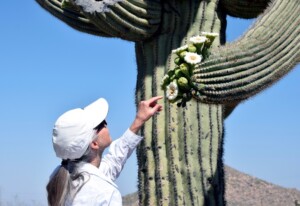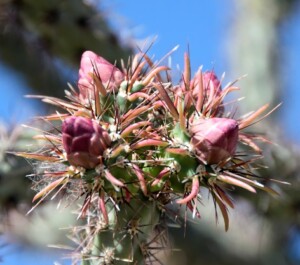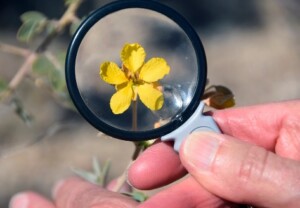MONITORING PLANT AND ANIMAL PHENOLOGY
Why It Matters
Phenology refers to the timing of life cycle events in plants and animals, such as leafing and flowering, hibernation and migration. The timing of these events drives other processes in the ecosystem, affecting all aspects of that system, such as when food is available for animals. Phenology also has important implications for people, from food production to seasonal allergies to diseases. Understanding the timing of these events is essential for managing natural and human systems.
Monitoring phenology provides one of the most sensitive and powerful indicators of how local environments are being affected by climate change and other environmental stressors.1 Tracking if and how changes in the timing of events occurs also helps identify which species are adapting to climate change and whether these shifting patterns will cause a disconnect between plants and the animals that rely on plant resources at specific times of year, such as during migration.2 Scientists also use phenology data to better understand how changes in climate affect important cycles such as flowering onset, which is critical to our understanding of how climate change will affect the world’s flora.3
The Conservancy’s Work
The Sonoran Desert is expected to become hotter and drier in response to climate change, which is exacerbated in the Phoenix area with the urban heat island effect. By tracking phenology of common plants in Scottsdale’s McDowell Sonoran Preserve, citizen scientists can directly observe the effects of climate change and learn which species are adapting through shifts in life cycle timing.
 Since 2017, the Conservancy has been collecting phenological data at three sites in the Preserve twice a week throughout the year. Citizen scientists monitor six plant species – saguaro, buckhorn cholla, jojoba, soap tree yucca, desert senna, and velvet mesquite. These species were carefully selected because they are easy to identify, used by pollinators, and are being studied at other areas in the region.
Since 2017, the Conservancy has been collecting phenological data at three sites in the Preserve twice a week throughout the year. Citizen scientists monitor six plant species – saguaro, buckhorn cholla, jojoba, soap tree yucca, desert senna, and velvet mesquite. These species were carefully selected because they are easy to identify, used by pollinators, and are being studied at other areas in the region.
In 2020, white-winged doves were added to the Preserve monitoring list as they are closely tied with the timing of saguaro life stages.
Because not all plants shift their phenology, these data provide a glimpse of how climate change is directly affecting plant and animal species in the Preserve. The data has much broader uses, as well. The Conservancy’s observations are shared with the USA National Phenology Network so that regional, national, and global scale trends can be assessed, providing vital information about how our world is responding to climate impacts.
How You Can Help
- Discover more about phenology by watching this brief video
- Learn about species and their phenophases
- Contribute observations on plants and animals in your area! – Become a phenology observer
- Support McDowell Sonoran Conservancy with a gift or volunteer as a Conservancy Steward
Partner:
National Phenology Network
McDowell Sonoran Conservancy Contact:
Mary Fastiggi | 480-998-7971 x 114 | mary@mcdowellsonoran.org
15300 North 90th Street, Suite 400, Scottsdale, Arizona, 85260 | 480-998-7971


Literature cited:
1Menzel, A. Phenology: Its Importance to the global change community. Climatic Change 54, 379–385 (2002).
2Visser, M. E. & Both, C. Shifts in phenology due to global climate change: The need for a yardstick. Proceedings of the Royal Society B: Biological Sciences 272, 2561–2569 (2005).
3Park, I. W. & Mazer, S. J. Overlooked climate parameters best predict flowering onset: Assessing phenological models using the elastic net. Global Change Biology 24, 5972–5984 (2018).
DISCOVER MORE
Protect Your Sonoran Preserve
The Power to Sustain the Sonoran Desert for Future Generations is Yours

